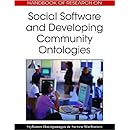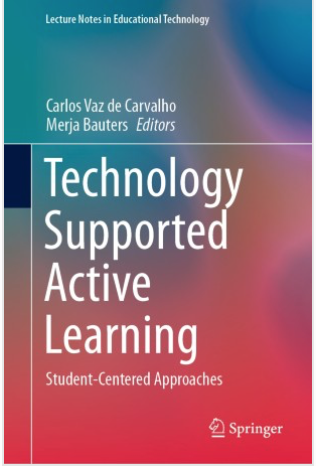
Distributed cognition model at workplace learning situations
September 2, 2015Finally some parts of the empirical data from Learning Layers http://learning-layers.eu/ project have been mapped back to the distributed cognition model.
This work relates cultural pattern appropriation in learning .
This figure describes how patterns “Problem solutions”, “Standards” or “Guidelines” may be updated and what is the role of scaffolding and knowledge maturing practice elements in workplace problem-solving and learning process.
The explanation of the model (draft so far):
Formation and stabilization of “Problem Solutions” or “New guidelines” or “Standards and normatives” as patterns:
1) The individuals, groups and collectives may initiate the Request for help on the basis of Dissonance between own knowledge and that knowledge that supposedly collectively possessed, or what the group might co-create collaboratively. The triggers for Requests for help are urgent problems, mismatch between existing guidelines/normatives/standards and the problem situations, or missing guidelines/standards/normatives for novel problem situations. The Request for help present to the selected expert, group of workmates or the collective (network, special group) either the “Problem and some possible solutions (with evidences)”; the “Guideline/Standard/Normative (with new non-corresponding evidences)”; or the “Actual work process with a novel project (with the access to monitor/participate in it)” .
2) The targeted helpers are selected based on proximity and trust. When the Request for help is directed towards individual experts, selected expert groups with different expertise, or groups with relatively equal and incomplete expertise, the specific short-term or long-term workforces are created. In case of sending help requests to the collectives representing self-organised members (e.g. special groups, networks), the individuals in the collective may be sufficiently alert having Awareness of upcoming Requests for help – they have collectively taken responsibility for providing help when relevant. Helping practice in collective level is most often an informal activity, while helping practice in collaborative level by experts and groups may be formally embedded to the actual working practices.
3) The individuals in the collective use Negotiation/Grounding for specifying the problem-solution/guideline/standard/normative. The end of Negotiating/Grounding is establishing the common ground. This common ground about problem-solution is often not Formalised/Standardized and shared with the collective, thus it will not be accessible to others for future Uptake. When the individuals of the group Re-experience the problem-solution they continue generating new variations and the pattern is not easily formed. The common ground established for updating or developing new guideline/standard/normative is usually Formalised/ Standardized, shared at collective level, and becomes accessible for further Uptake/Re-experiencing what can amplify the pattern formation.
4) The individuals involved in helping usually Contextualise the problem/ guideline/standard/normative into their locations or situations enabling the variety of alternatives to be discovered in short time. The de-contextualization to generalize solution/guideline/standard/normative is supported in work-groups who discuss or can practice something together by Co-constructing the shared documents that mediate the Formalization/Standardization and are more useful for later pattern sharing at the collective level.
5) Different forms of Validation are used in the Negotiation/Grounding process. The individuals or groups share examples of problem-solution/guidelines/normatives/standards, Validating those with evidences (photos, schemas), personal expertise gained in practice, guidelines/normatives/standards and real examples of practicing to try something out.
The members of the groups and collectives also gain Social Recognition that validates them as experts.
6) The Formalization/Standardization of solutions/guidelines/standards/normatives happens mostly at the collaborative level Co-Creation activities. The collective groups (such as special groups in What’s App) or groups formed at workplace for solving urgent problems do not Formalize/Standardize the solutions/guidelines/standards/normatives that hinders pattern amplification through Uptake/Re-Experiencing, but leaves room for different alternative variations to be used.
7) Persons, groups and collectives may recommend personally or collectively Validated and/or Formalized/Standardized problem-solutions/guidelines/standards/normatives as patterns to resolve help requests [alternatively the Recommender systems may select based on the Request for help from the existing solutions in the collective knowledge base the most relevant “Problem Solutions” or Experts and recommend those]
Change of “New Problem solutions”, “New guidelines” or “New Standards and normatives” as patterns:
1) The practitioners at work belong to the formal/informal groups and collectives (e.g. networks or special interest groups), share common knowledge and practices, and have Awareness of mutually interesting problem-solutions/guidelines/standards/normatives. This Awareness may be mediated by some technologies such as forums (WhatsApp) and databases to discover guidelines/normatives/standards.
2) The practitioners (both individuals and representatives of groups and collectives) perceive at work situations Dissonance between the solutions/guidelines/standards/normatives they know and have experienced, and the potentially existing patterns (solutions/guidelines/standards/normatives) in their formal/informal groups and collectives. They also may discover the mismatch in solutions/guidelines/standards/normatives and actual needs.
3) They involve other experts through Requesting for help from individuals, groups and collectives to Co-create new solutions/guidelines/standards/normatives or will develop by the new solution or practice themselves. Alternatively they Create/Construct novel solutions, and Re-experience to test them out.
They share the New Solution Validating it with evidences with the groups or collectives, and Request for Validation.
4) The addressed expert, group or collective is Negotiating/Grounding with the proposer to specify the New Solution or Practice.
5) As part of Negotiating/Grounding the expert, group or collective is Validating the New Solution by comparing it with existing solutions/guidelines/standards/normatives as well as with expertise, personal experiences, similar cases or with the commonly accepted collective practice. They also aim at achieving common ground about the Formalization/Standardization of it. As a result they may decide the New Solution or Practice to be significantly different and useful and yet missing; or find it being the instance of some existing solution/guideline/standard/normative.
Possible Validation in action may take place to develop the new solution/guideline/standard/normative, that incorporates Contextualization of New Problem Solution to be tried out in at different situations or de-contextualization in a specific case in which the members use the mediating shared document to Formalize/Standardize the New Problem Solution. The Formalization/Standardization makes it shareable and other practitioners can Uptake/Re-experience it that amplifies the new pattern in the community of professionals.
Application of “Problem Solutions”, “New guidelines” or “Standards and normatives” as Patterns
1) At some point the individuals/groups or collectives Re-contextualise the provided solutions and applies guidelines/standards/normatives to solve the problem in hand; they may Re-Experience the solutions/guidelines/standards/normatives several times until Uptake happens and it becomes frequently/commonly used. That will strengthen the pattern.










Leave a comment